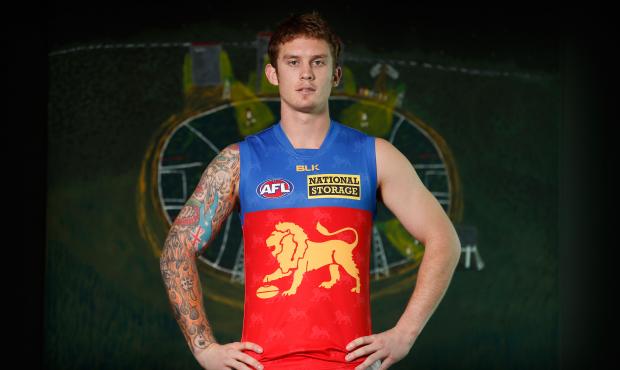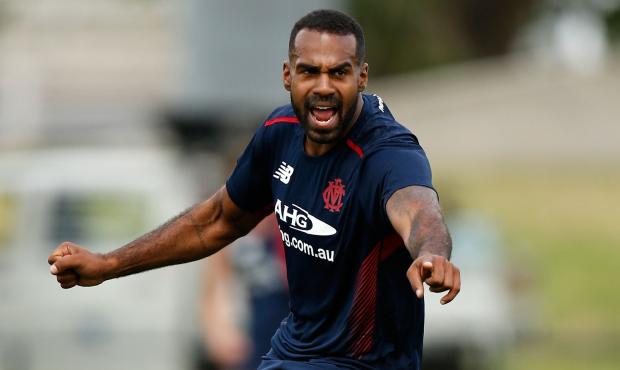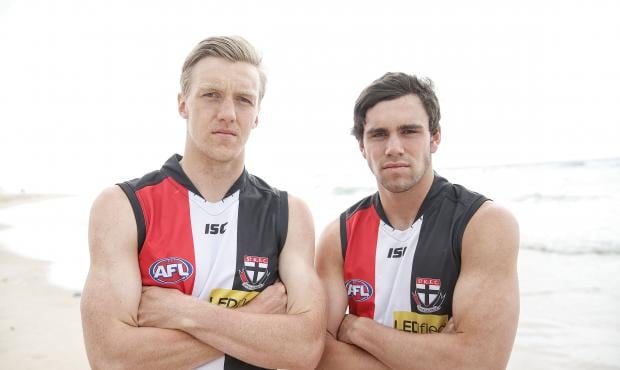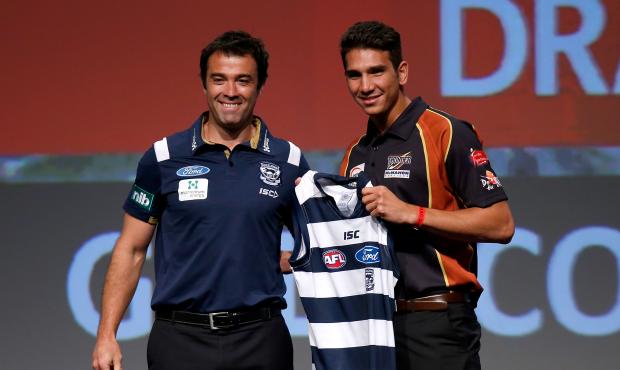ONE OF Alastair Clarkson’s favourite sayings is 'when one soldier goes down we replace him with another’.
It’s this analogy that comes to mind when thinking of the AFL trade and draft periods – it’s the time to replace the 'soldiers'.
Some careers will start, others will end; it is a stark reality in the evolution of professional sport.
But the importance of this period to clubs cannot be overstated … in simple terms, it is the time when team success is determined.
The national draft is more likely to provide a window to long-term fortunes, nominally 6-8 years and sometimes even longer, but through shrewd player trading that success could be as soon as next year.
Regardless of the timeline, this is the most critical phase of an AFL club’s strategic operations.
Get it right and the rewards are obvious. Get it wrong and the effects can be catastrophic.
The pass mark for a team is acquiring 2-3 players of AFL standard each year. Secure more and your performance graph is trending upwards. Obtain less and the pressure builds on everyone at the club for future seasons.
Statistical analysis shows that the AFL premiers since 2000 have consisted of an average of 12 rating one and two players (also known as A or B-grade) with the remaining 10 players being a rating three (a C-grade) or below.
Some, like the Brisbane Lions team of 2002 and Geelong of 2009 had 15 'rating 1-2' players – representing the two strongest premiership teams of the past 15 years.
So, not only are talented players sought by every club but, as obvious as it might sound, elite players directly equate to premiership success.
It’s often suggested that the bottom six players in a team win Grand Finals when, in fact, it is the first six players who normally decide the outcome (despite the fashionable attraction for some people to suggest the alternative).
With AFL player lists now finalised for 2015, let’s look at the activities of each club during the past two months:
Adelaide
The retirements of two long-serving players in Ben Rutten and Jason Porplyzia had the potential to destabilise Adelaide’s team structure for 2015 but the recruitment of promising young key defender Jake Lever in the draft, combined with serviceable Hawks duo
Kyle Cheney and Luke Lowden in the trade period, has offset their immediate issues. The Crows’ team structure looks sound so overall, it was a solid result.
2014 Trade/Draft Period Rating: B-
Brisbane Lions
Started the critical trade/draft period on the back foot after the retirement of champion Jonathan Brown and the
trading of Joel Patfull to Greater Western Sydney – both following on from the unexpected loss of several young players in the same period last year. But the Lions answered the challenge with flying colours, securing current stars,
Dayne Beams from Collingwood and
Allen Christensen from Geelong, along with highly talented academy player Liam Dawson in the pre-draft period. The Lions ended a potentially daunting phase as real winners.
2014 Trade/Draft Period Rating: A-
The addition of Dayne Beams makes the Lions' midfield a scary proposition. AFL Media
Carlton
The decision to release talented but unsettled pair,
Mitch Robinson and
Jeff Garlett plus allowing Jarrad Waite to leave during free agency, was a clear indication that anything but 100 per cent effort and commitment would not be tolerated at Visy Park in 2015. This was both a timely and important message by the Blues who brought in highly rated GWS key-position player
Kristian Jaksch, his GWS teammate Mark Whiley, and Western Bulldogs duo,
Liam Jones and Jason Tutt, along with four players at the national draft.
2014 Trade/Draft Period Rating: C+
Collingwood
Any club facing the loss of players such as Luke Ball, Dayne Beams, Ben Hudson, Heritier Lumumba, Quinten Lynch and Nick Maxwell in the one year would fear what the future may hold – but it’s anything but that for the Magpies. They have done an exceptional job of managing their list through transitional change and the coming years are bright. Don’t expect miracles next season but 2016 onwards should be positive for a team who did extremely well to secure
Levi Greenwood in the trade period and then Jordan De Goey, Darcy Moore, Brayden Maynard and Matthew Goodyear in the one draft.
2014 Trade/Draft Period Rating: B+
Essendon
Sorry to remind Bomber fans because they already know it but Paddy Ryder is a big loss! There was little the club could do to convince him to stay beyond 2014 so it was more important to focus on the future than look over their shoulders to the past – something that Essendon did well during this year’s trade and draft periods. To acquire
Adam Cooney,
Jonathan Giles and
James Gwilt in the trade/free agency period and then both Jayden Laverde and Kyle Langford with just two selections in the draft is a wonderful result despite the club’s recent sanctions.
2014 Trade/Draft Period Rating: B
Fremantle
Unusually quiet during the trade period, Fremantle chose to focus on their midfield depth at the draft with four players capable of playing through the middle and front half of the ground. The two stand-outs were Lachie Weller and Connor Blakely – both outstanding talents who should become genuine players. Despite not addressing a perceived need by selecting a key-position player, the Dockers’ draft performance was quite positive so expect some good returns in the long-term.
2014 Trade/Draft Period Rating: B-
Geelong
The moves of Allen Christensen and Travis Varcoe in the trade period represented a potentially damaging loss of pace at the Cats but the recruitment of Nakia Cockatoo at the national draft almost single handedly overcame the issue. Together with acquiring additional speed via other draft selections and the clever recruitment of Sam Blease as a delisted free agent, Geelong has immediately addressed any real concerns – not to mention the benefits of key talls,
Mitch Clark and
Rhys Stanley in the trade period.
2014 Trade/Draft Period Rating: B
The Cats addressed their pace issues with the recruitment of Nakia Cockatoo. Picture: AFL Media
Gold Coast
How do you make a team bursting with young talent even stronger? Answer: Simply draft more outstanding talent at the national draft – something that the Suns have done with success again this year. To secure Peter Wright, Jarrod Garlett and Touk Miller in the same draft is simply superb. This complemented a handy trade period that netted veteran
Nick Malceski and rising Hawk,
Mitch Hallahan. While “potential” is often considered a dirty word in professional sport, this team is about to move from the dreaded P word to the more attractive A word – “arrived”.
2014 Trade/Draft Period Rating: A
Greater Western Sydney
Relinquishing Tom Boyd, Kristian Jaksch and Jono O’Rourke didn’t set the ideal tone for the Giants during the trade period – but they overcame their losses with the acquisition of champion Bulldogs player
Ryan Griffen and quality Brisbane defender
Joel Patfull, followed by the talented brigade of Jarrod Pickett, Caleb Marchbank and Paul Ahern (plus highly rated academy player Jack Steele) in the draft to end the total period in front. An excellent result in light of the initial challenges presented to them.
2014 Trade/Draft Period Rating: B
Hawthorn
The back-to-back AFL premiers managed to get stronger in the short term through the recruitment of
James Frawley as a free agent and talented GWS midfielder
Jonathan O’Rourke during the trade period. While their draft returns were limited as a result, they have done well to improve an already high quality player list and effectively position themselves for a three-peat next year. Challenges are coming beyond 2015 but Hawthorn’s time is now.
2014 Trade/Draft Period Rating: B
Melbourne
The Demons lost two talented players in the prime of their careers during the trade/free agency period – namely James Frawley and Mitch Clark – but went part way towards replacing them with the recruitment of
Heritier Lumumba,
Jeff Garlett and
Sam Frost. It was their draft returns that really impressed with Christian Petracca, Angus Brayshaw, Billy Stretch and Alex Neal-Bullen representing a large portion of the next generation of Melbourne midfielders. An extremely positive outcome.
2014 Trade/Draft Period Rating: B+
The Demons loved bringing in the experience of Heritier Lumumba. Picture: AFL Media
North Melbourne
Although the loss of Levi Greenwood wasn’t ideal, they certainly improved their list for 2015 with the recruitment of free agents
Jarrad Waite and
Shaun Higgins. Both players have the ability to turn games in minutes and will provide North Melbourne with much needed bite up forward. The addition of key-position player Sam Durdin in the draft was an exceptional choice – simply the perfect fit for the Roos’ talented list.
2014 Trade/Draft Period Rating: B+
Port Adelaide
Just one deal made this year’s trade/draft period an instant success –
Paddy Ryder. Through his recruitment the Power has found the missing piece in their premiership puzzle: a very talented player capable of rotating between ruck and forward to support Matthew Lobbe. While focusing on talls, Port Adelaide’s draft returns were understandably limited but have no doubt, they are now ready for a genuine assault on the 2015 premiership.
2014 Trade/Draft Period Rating: B
Richmond
The Tigers were surprisingly quiet during the trade period – especially in comparison to recent years – but they deliberately addressed some areas of concern in the draft. The recruitment of Corey Ellis, Connor Menadue, Nathan Drummond and Daniel Butler provides real run and carry to a team needing extra speed while hulking key tall Reece McKenzie was a worthy choice as a development project to support Jack Riewoldt. Overall, a sound result.
2014 Trade/Draft Period Rating: C+
St Kilda
The Saints have made their intentions clear over the past few years – initially address ‘salary cap’ concerns, focus on the draft and then aggressively attack free agency. The first and second areas are now well in hand and the pain often associated with rebuilding is almost done. While some challenges still exist for a player list that has required remedial action since 2011, the recruitment of Paddy McCartin, Hugh Goddard, Daniel McKenzie and Jack Lonie in the draft represents an excellent return…coming on the back of similar positive results in 2013.
2014 Trade/Draft Period Rating: B+
Hugh Goddard and Paddy McCartin will be out to make an immediate impact. Picture: AFL Media
Sydney Swans
The 2014 trade and draft periods offered very stark comparisons for the Sydney Swans. Despite no capacity to recruit players via trading, their attention turned to the local academy and national draft to attract new talent with quite encouraging results. Losing
Nick Malceski and
Tim Membrey for no return was offset by securing academy players Isaac Heeney, Jack Hiscox and Abe Davis – all wonderful talents who were acquired under the pre-draft bidding system for lower than market value selections.
2014 Trade/Draft Period Rating: B-
West Coast
Holes don’t get much bigger than
Darren Glass and
Dean Cox. Both have been champions of the Eagles for a long time and their 2014 retirements will leave an obvious void at the club. But West Coast has been developing potential leaders in Shannon Hurn, Eric Mackenzie, Matt Priddis, Scott Selwood and Josh Kennedy for some time and together with the recent addition of draftees, headlined by the highly talented Liam Duggan and Tom Lamb, they are a team slowly but surely rebuilding for the future.
2014 Trade/Draft Period Rating: B-
Western Bulldogs
Bold! That’s the only way to describe the Western Bulldogs raid of young GWS forward
Tom Boyd during the trade period. They retaliated to the loss of champions
Ryan Griffen and
Adam Cooney in the best possible way – by securing a potential new franchise player of their own. Their aggressive trade period was followed by a relatively subdued approach to the draft with the focus on ball carriers – an approach that was somewhat complemented by tall defender Zaine Cordy as a father-son selection. The work continues for the Dogs.
2014 Trade/Draft Period Rating: B-
* * * * * * * * * *
So, there it is … another year’s trade and draft periods have come and gone. There were some winners and eventually, maybe some losers in what are the most important two months for an AFL club.
History is the only true judge of what went right and wrong … the real work for both players and coaches has only just begun.
For recruiting staff all around the country it’s time to take a well-earned break. They have had the toughest job of all - approximately 40 weeks of constant matches, video, data, interviews and travel to secure your club’s future.
Spare a thought for them when considering your club's recruits over coming months because they have had to make their assessments ‘prospectively’ based upon often immature bodies and minds. The rest of us have the luxury to do so ‘retrospectively’ after years of specialised coaching and development.
As we know, recruiting is not an exact science. It is about players – or 'soldiers' as Clarko calls them – and replacing each one of them as they go down.







